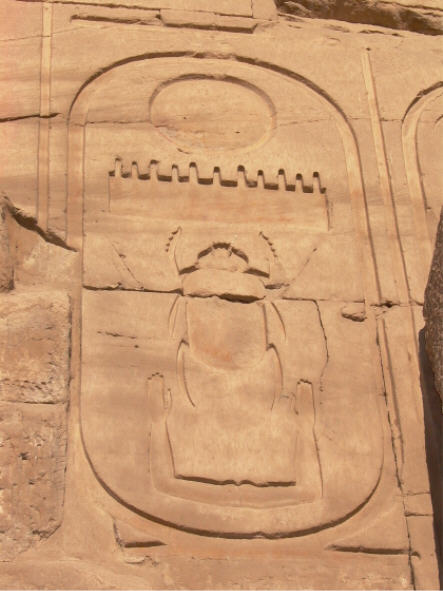|
Maat-ka-Ra Hatshepsut |
last update: 21.05.2013 | |
|
Karnak - 8th Pylon |
||
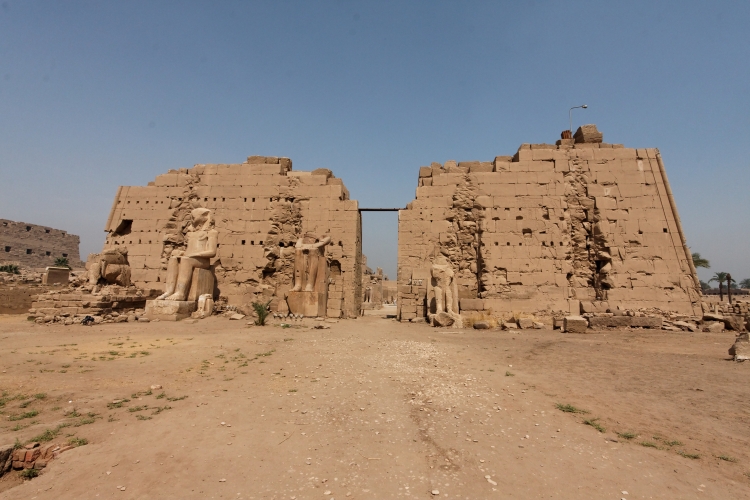
| South view of the 8th Pylon. The pylon is the first building in ancient Egypt, which was completely made of sandstone. |
|
|
Along the southern processional route to the temple of Luxor
the 8th Pylon was built by Hatshepsut or finished during her reign - if the
Pylon was already begun during the reign of her father, Thutmosis I, or her
husband, Thutmosis II.
The decoration of this pylon is probably to be dated to the end of the reign of Hatshepsut (Martinez, "Le VIIIe pylone", 1993). This is in agreement with the writing of the throne-name of Thutmosis III, "Men-kheper-ka-Ra" (see photo left), which according to Brovarski (JEA 62, 1976) is testified only for the years of the co-regency (years 5 - 20). As mentioned by Grimal and Larché (see: Cahiers de Karnak XII, part 2, p.491, 2007) the pylon was - amazingly - never mentioned in the inscriptions of Hatshepsut nor in those of Thutmosis III. |
|
|
Cartouche reading "Men-kheper-ka-Ra" at the 8th pylon. |
| The pylon was built next to or probably replaced the "Great southern gate" built by Amenhotep I. Some limestone blocks of this gate were recovered from the "Cour de la Cachette" (Grimal, Larché, Cahiers de Karnak XII, loc.cit.). Today, a lintel of the gate is exhibited in the Open Air Museum at Karnak and contains the specification of the gate height: approx. 10 m). However, at least it has been dismantled by Thutmosis III when he erected the 7th Pylon. |
| In front of the southern side of the 8th Pylon a several colossal statues had been erected, these are discussed on a separate page. |
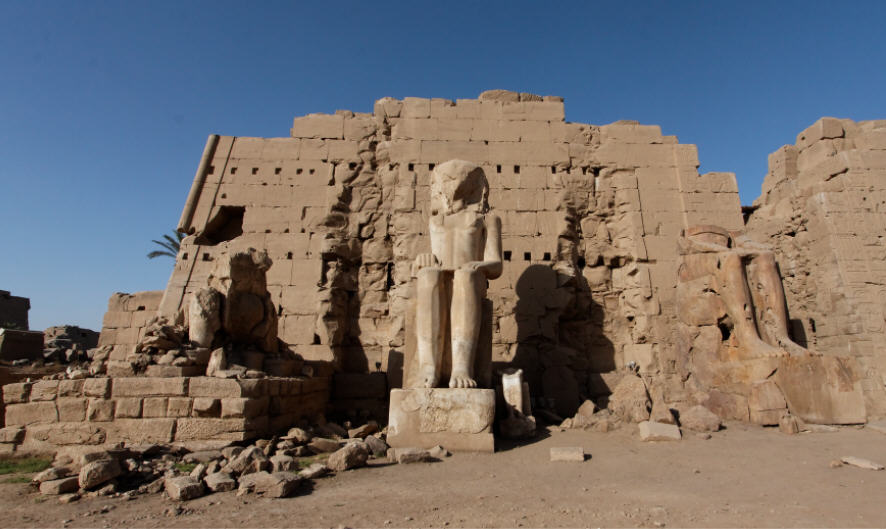
| Beside the statues the photo above shows the damage of the pylon around the niches wherein the flagpoles had been mounted. Not every pylon had have his flagpoles although the niches intended for the flagpoles had been built. However, in some cases the niches had been (deliberately ?) built in such a way that it was not possible to mount the flagpoles. |
| Pylons which indeed had been equipped with flagpoles - like the 8th Pylon of Hatshepsut - can frequently be recognized by damage of their niches as demonstrated by the photo above. These devastations result from conquests after the end of the New Kingdom - the conquerors liked to set fire to the flagpoles! As a result of the developing heat the stone at the corners of the niches had burst. |
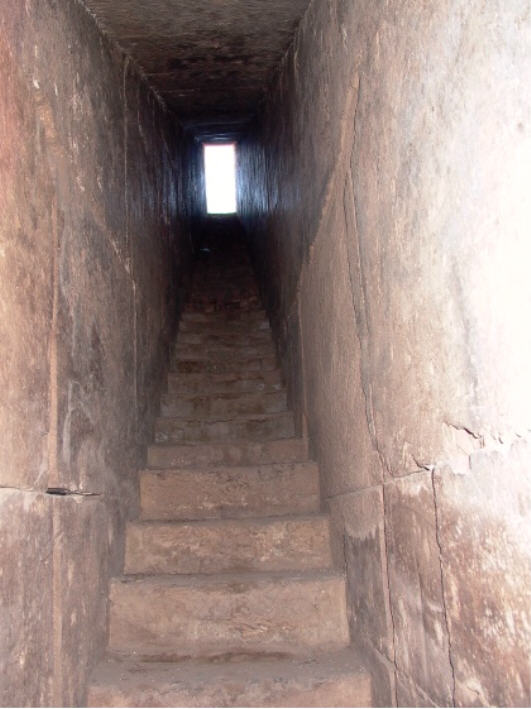
| Inside the eastern wing (i.e. at the side of the "Holy Lake") of the pylon a staircase leads to the central bridge connecting the two wings of the pylon.. However, since the bridge over the gate of the pylon has been destroyed the stairs end up suddenly (see photo below). Thus, the staircase is closed to avoid any danger. |
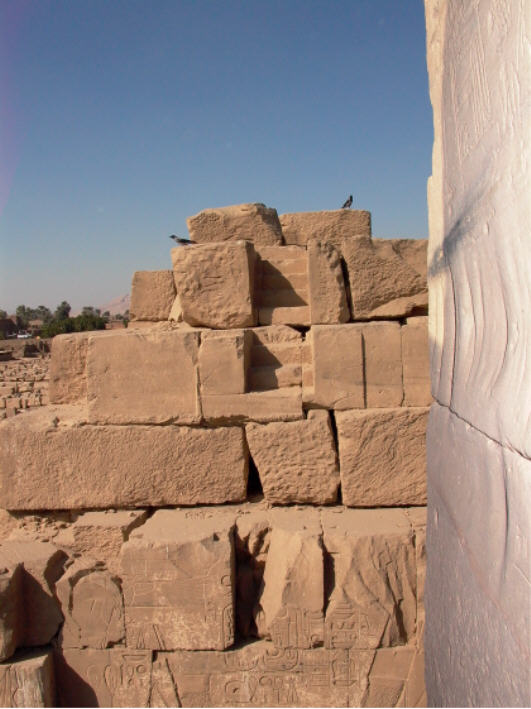
| Both sidewalls of the staircase surprise with graffiti from later times. These graffiti shows ceremonies performed in front of the 7th Pylon built by Thutmosis III. For sure, not everybody was privileged enough to attend the ceremonies at the court in front of the pylon, i.e. the majority of the people had been kept back at the 8th Pylon. These graffiti were most likely carved into the walls by visitors who were allowed - most likely as today after giving some baksheesh - to enter the roof of the pylon and to view the ceremonies from there. |
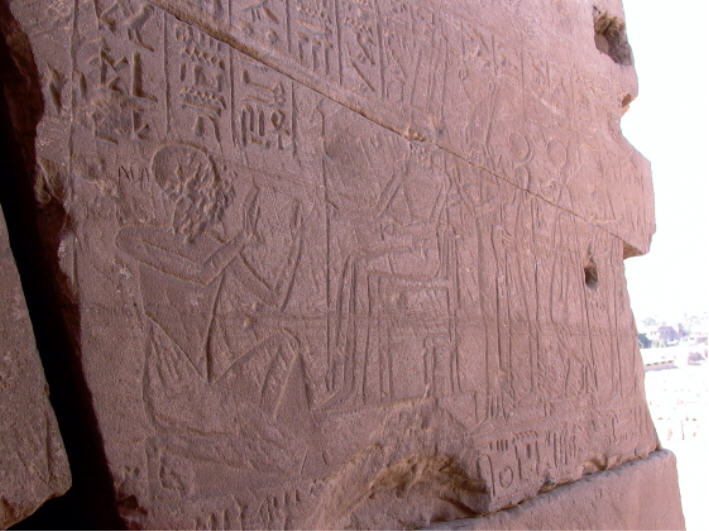
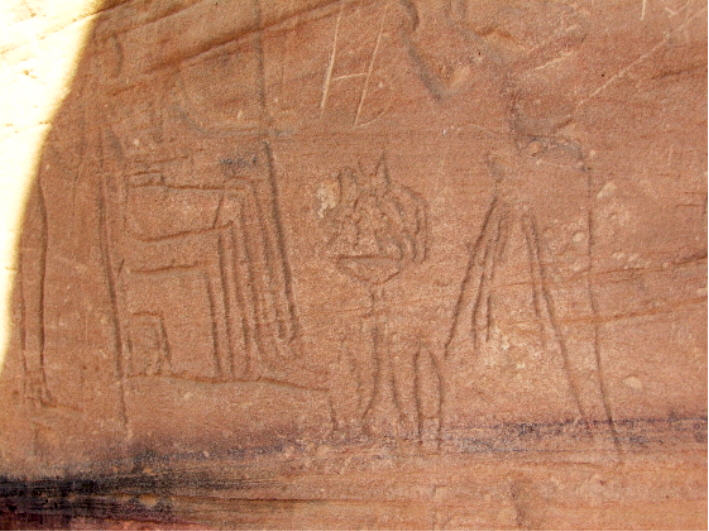
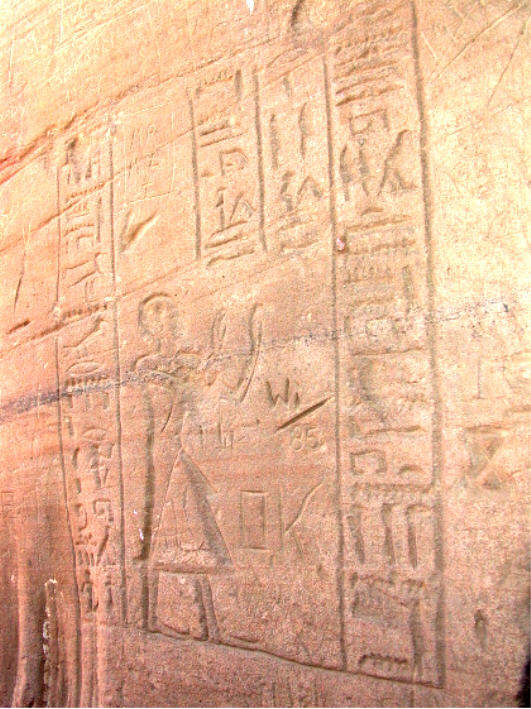
| What the visitors had seen from the roof or the bridge of the 8th Pylon had been the view of the 7th Pylon, built by Thutmosis III, as shown in the model below. |
| The jambs of the southern entrance had been decorated in the names of Thutmosis II (west side) and Thutmosis III (east side; see the cartouche of "Men-kheper-ka-Ra" above). The lintel (a part of the bridge of the pylon) has vanished. |
